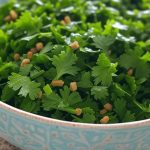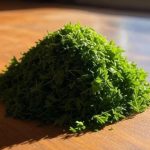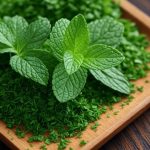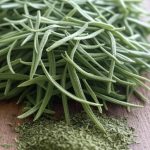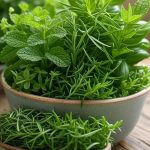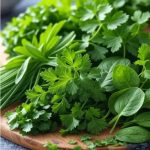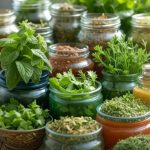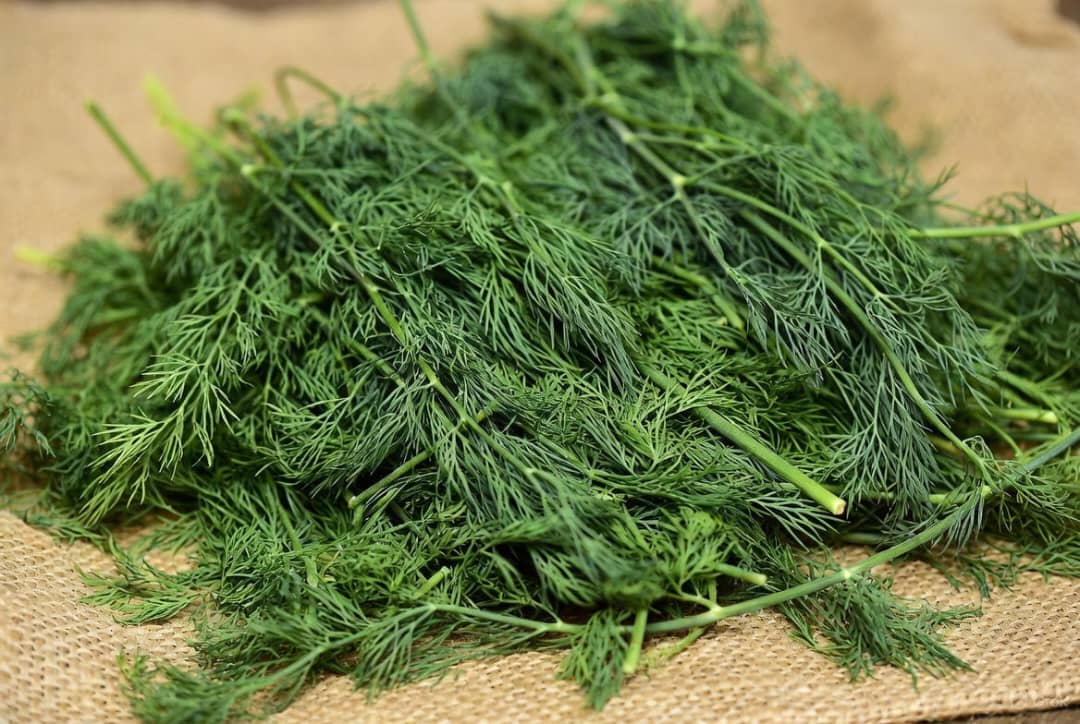
The price of buying and selling export-quality dried dill varies depending Iranan of the season and different environmental conditions.
Dried Dill: The Little Green Miracle of Iranian Kitchens
Dried dill is one of the most widely used and beloveddried herbs in Iranian cuisine, as well as in many Middle Eastern and Mediterranean cuisines. This fragrant herb, with its sharp and fresh aroma, is almost never absent from any Iranian home. From herb kuku and ash reshteh to mast-o-khiar (yogurt with cucumber) and pickles, dried dill holds a special place and sometimes even replaces fresh dill — although their flavor and aroma are not exactly the same.
History and Origin of Dill:
Dill is one of the oldest known medicinal plants and spices in human history. Archaeological evidence shows that ancient Egyptians were using dill more than 5,000 years ago. Dill seeds have been found in pharaohs’ tombs, and ancient Egyptian medical papyri mention its digestive and anti-flatulence properties. In ancient Greece, Hippocrates, the father of medicine, referred to dill as a carminative and stomach-soothing remedy. The Romans considered it a symbol of vitality and victory, giving it to their athletes and even minting coins featuring dill leaves.
In Iran, dill has been known since the Achaemenid era. In Avestan and Pahlavi texts, it is referred to as “shiw” or “shivīd,” and it is also mentioned in the Bundahishn. Iranians have long regarded dill as both a food and a medicine, and it still holds a high place in traditional Iranian medicine.
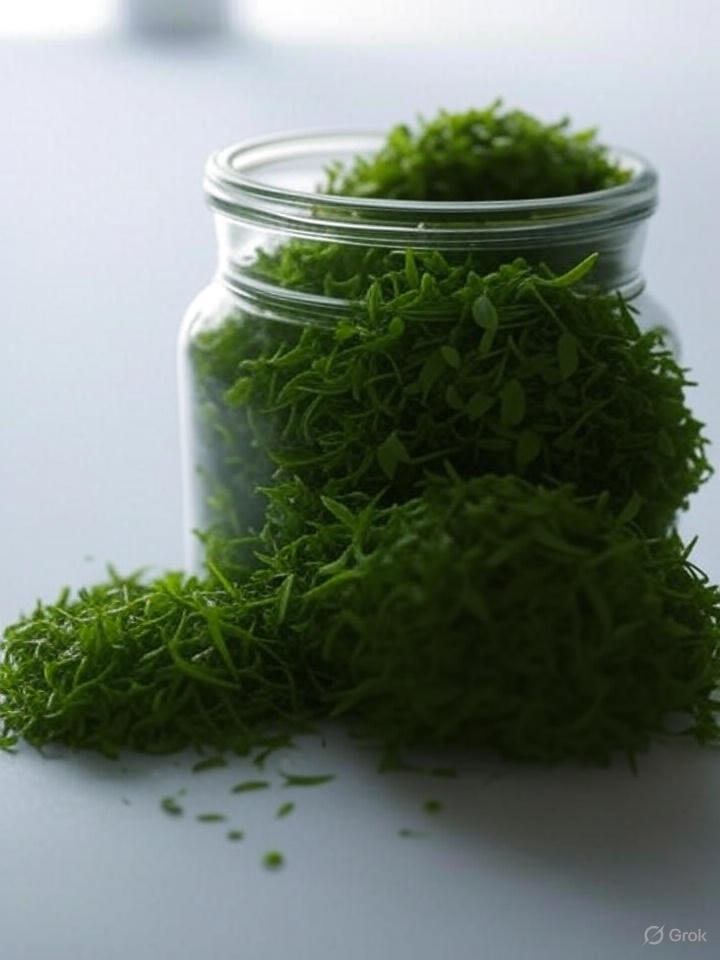
Difference Between Dried and Fresh Dill
Fresh dill has a cooler, milder, and slightly sweeter aroma with a bright green color. When dried, its scent becomes sharper, more intense, and concentrated, and its color turns dark green or grayish-green. Many professional cooks believe that dried dill gives better flavor in cooked dishes (such as soups, ghormeh sabzi in small amounts, or kuku), because its aroma spreads beautifully throughout the food during long cooking. Fresh dill, on the other hand, is more suitable for cold dishes or those finished at the last moment (yogurt, Shirazi salad, rice with fish, etc.).
Nutritional Value of Dried Dill:
Per 100 grams of dried dill approximately contains:
– 300–350 kcal energy
– 20 g protein (very high for a herb)
– 55 g carbohydrates (mostly fiber)
– 14 g fat (mainly essential fatty acids)
– Extremely high levels of vitamins A, C, B6, calcium, iron, magnesium, potassium, and antioxidants
Dried dill is rich in flavonoids, terpenoids, and phenolic compounds that have anti-inflammatory, anti-cancer, and antibacterial properties.
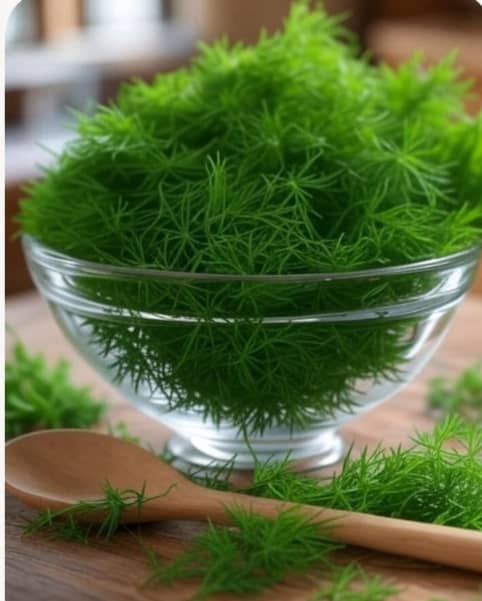
Therapeutic Benefits of Dried Dill in Traditional and Modern Medicine:
1. Strong carminative and anti-bloating agent
Dried dill is the most famous herbal remedy for bloating and gas-related stomach pain. Compounds like carvone and limonene relax the smooth muscles of the digestive tract and help expel gas.
2. Increases breast milk production
Since ancient times, nursing mothers have been advised to consume dill tea or dill-rich foods. Recent studies have confirmed that dill can increase prolactin levels.
3. Improves sleep and reduces anxiety
The aroma of dill has a calming effect. Dill essential oil is used in aromatherapy, and dill tea before bed is recommended.
4. Regulates menstruation and reduces period pain
Dill is an emmenagogue and effective in reducing uterine spasms.
5. Oral and dental health
Chewing dried dill leaves or seeds eliminates bad breath and has antimicrobial properties.
6. Lowers cholesterol and blood sugar
Animal and human studies show that dried dill can reduce LDL cholesterol and increase insulin sensitivity.
How to Properly Dry Dill at Home:
The best dried dill is the one you dry yourself at home:
– Buy or harvest fresh dill in spring or early summer when its aroma is at its peak.
– Remove thick stems and keep only the leaves and thin stems.
– Wash thoroughly and dry completely (with a towel or salad spinner).
– Spread it out in the shade in a dark, well-ventilated place (on clean cloth or in a basket).
– Room temperature should not exceed 35°C (high heat causes aroma loss).
– After 4–7 days, when completely dry and brittle, store in an airtight jar in a cool, dark place.
Note: Do not use an oven or microwave to dry dill — it significantly reduces the aroma.

**Price of Premium Export-Quality Dried Dill in 1404 (2025–2026)**
Ranged from 480,000 to 650,000 IRR per kilogram.
**Safe Consumption Amount**
Dried dill is very safe, but consuming more than 10–15 grams per day (about 3–4 tablespoons) for a long period may cause skin sensitivity or low blood pressure in some individuals. Pregnant women should be cautious with large amounts (normal culinary amounts are safe).
Dried Dill in Iranian Cuisine:
There is hardly any Iranian herb-based dish that doesn’t include dried dill:
– Ash reshteh (dried dill alongside dried mint is mandatory)
– Herb kuku and dill kuku
– Baghali polo and dill rice (though much more fragrant with fresh dill)
– Stews (especially celery stew and sometimes ghormeh sabzi in certain regions)
– Pickles (liteh pickle, haft bijar)
– Mast-o-khiar, borani esfandaj
– Zereshk polo with chicken (in some northern recipes)
– Northern stuffed fish and herb rice with fish
Cooking Tips with Dried Ill:
– Always add dried dill in the last 10–15 minutes of cooking so the aroma doesn’t evaporate.
– Rub it between your hands before adding to release more fragrance.
– For stronger aroma, lightly sauté it in oil or butter (like dried mint for ash).
– For a fresher taste, use half dried and half fresh at the end.
**How to Buy High-Quality Dried Dill**
Good-quality dried dill should:
– Have a dark greenish-gray color (not brown)
– Have a strong, distinct aroma (you should smell dill from 20 cm away)
– Be finely chopped and clean, without thick stems
– Be packed in transparent, airtight packaging to prevent moisture
Vita-Veg Collection strives tirelessly to offer high-quality, long-lasting products to its valued customers.
Final Word:
Dried dill is not just an ordinary dried herb; it is a powerful herbal medicine, a fragrant spice, and an essential part of Iranian culinary identity. When the sharp, delightful scent of dried dill combines with dried mint in a hot bowl of ash reshteh, it feels as though all childhood memories and grandmother’s table come back to life. These little green pieces, despite their simplicity, are among the most important flavor givers in the daily life of us Iranians.
Every time you take the jar of dried dill out of the cabinet, pay a little more attention to it — you are holding one of the oldest and most beneficial gifts of nature to humanity.
For more information about product quality and current prices, please contact the consultants at Vita-Veg Collection.
Please share your opinion with us!
Sales Manager & Consultant: Ms. Demrchiloo
Follow us on social media:
Telegram: https://salmasabzine
Instagram: salmasabzine@
Website: https://Vita-veg.com
Phone: 09220656187




